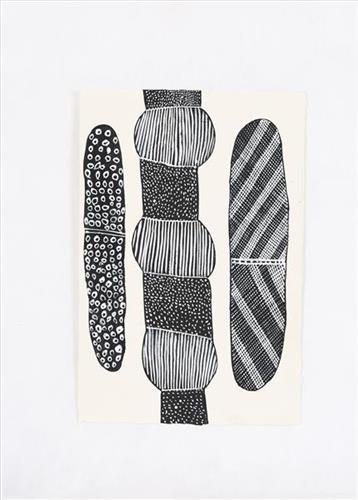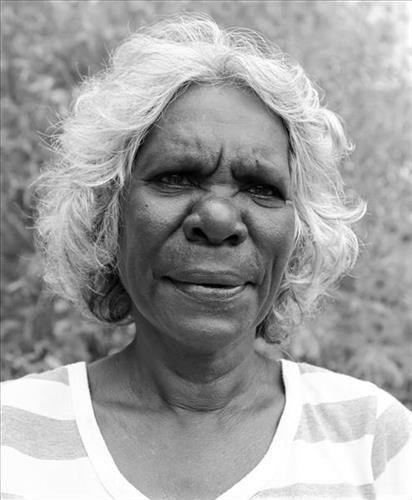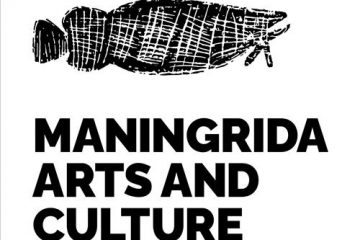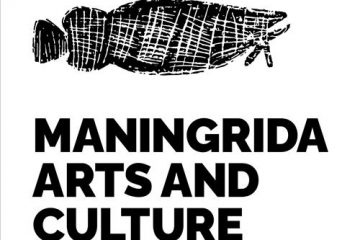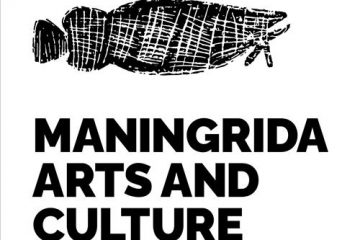111982338844
Wak Wak
“This is two black crows, baby and mother, there are living in the waterhole there, near to Kurrurldul. It’s a dream, longtime, but it’s still there. We call the crow Wak.”
– Melba Gunjarrwanga
This painting depicts a sacred site at ‘Kurrurldul’, an outstation south of Maningrida.The ‘rarrk’, or abstract crosshatching, on this work represents the design for the crow totem ancestor called ‘Djimarr’. Today this being exists in the form of a rock, which is permanently submerged at the bottom of Kurrurldul Creek. The ‘Djimarr’ rock in the stream at Kurrurldul is said to move around and call out in a soft hooting tone at night. Both the stone itself and the area around it are considered sacred.
The imagery represents the rock mentioned above at the bottom of Kurrurldul creek, which is the final transmutation of the dreaming ancestor ‘Djimarr’. Finally, the pattern used here is also the crow design used in the sacred ‘Mardayin’ ceremony, which is a large regional patri-moiety ceremony now rarely conducted in central and eastern Arnhem Land.
